Chicago Cubs: What went wrong for Hector Rondon in 2017?
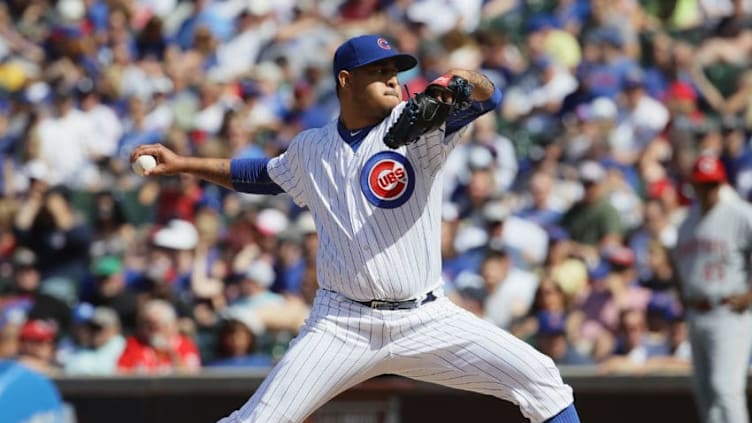
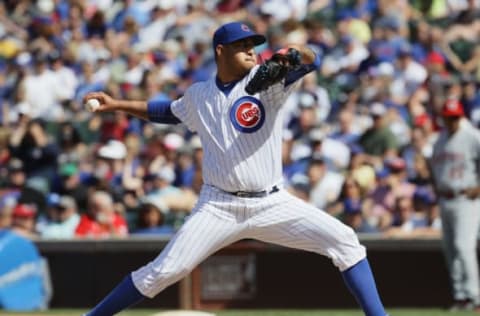
Less than a year from being removed as the Chicago Cubs’ closer, right-hander Hector Rondon limped through one of the worst seasons of his big-league career.
Right up until the Chicago Cubs front office brought in Aroldis Chapman to close games out ahead of the July 2016 trade deadline, Hector Rondon was the man in the bullpen.
Chapman, of course, came to the North Side as the team eyed a World Series title. He played an integral role throughout the postseason, at multiple points putting the team on his back and willing them to victory. He left via free agency, returning to the New York Yankees last winter, but the closer role again eluded Rondon.
The Cubs dealt struggling young outfielder Jorge Soler to the Kansas City Royals for closer Wade Davis. The gritty right-hander went on to set the all-time franchise record for consecutive saves converted and earned the team’s lone All-Star selection in Miami this summer. But now, Davis is also a free agent. And the Cubs have a good shot at losing him the same way they lost Chapman last offseason.
Sure, the team could make Davis their one big spend this winter. But regardless of whether they do or not, the Cubs need Hector Rondon to get right before Opening Day 2018.
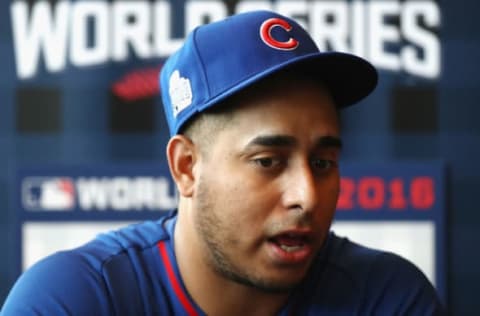
Chicago Cubs: Team had one of the best for a stretch
For whatever reason, Cubs fans love to loathe Hector Rondon and Pedro Strop. We won’t get into the reasons here – but the point is this. These two are both very capable of being quality bullpen arms on any big-league roster.
We’ll go back to 2014 for starters. The right-hander, who entered the year without a major league save to his name, racked up 29 over the course of the season, posting a 1.058 WHIP and 2.26 FIP. His 4.20 strikeout-to-walk ratio led to repeated success over the course of the year. Just like that, the Cubs had a weapon on their hands.
He built on that success in 2015, as well. This time, he saved 30 games for Chicago, lowering his earned run average down to 1.67 – despite his FIP rising to 2.68. But, let’s be honest, we’ll take that number any day out of any reliever. He clearly benefited from the team’s defense, but you have to use what’s behind you when you’re on the mound.
Over that two-year stretch, Hector Rondon was masterful for the Cubs. He appeared in 136 games, posting a 2.03 ERA across 133 1/3 innings of work. He struck out 132 batters, walking just 30. Heading into the 2016 campaign, the ninth inning was locked down and Hector Rondon was the guy you wanted with the ball. Period.
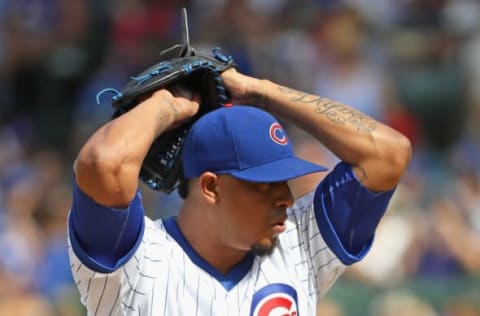
Chicago Cubs: Rondon carried success with him into 2016
Just how good was Rondon early in 2016? At one point, his Fielding Independent Pitching (FIP) was negative 0.15. That’s right. Below-zero. Fangraphs detailed this in early May last year – and the piece is definitely worth a read for a trip down memory lane.
Well, nobody’s matched what Rondon’s done thus far. He’s faced 43 batters, struck out 21, walked none, and allowed zero home runs. Only four batters have reached against Rondon — all singles.
More from Cubbies Crib
- Cubs should keep close eye on non-tender candidate Cody Bellinger
- Cubs starting pitching has been thriving on the North Side
- Make no mistake: the Cubs are very much about power hitters
- Cubs are giving pitcher Javier Assad a deserved shot
- Cubs: It’s time to start thinking about potential September call-ups
Over the first half, the hard-throwing right-hander did what he always does: strikes out hitters and limits the self-inflicted damage. You probably don’t realize just how effective Rondon was. He walked four batters, striking out 42 prior to the 2016 All-Star Break.
But then the Cubs went out and picked up Chapman in the deal that sent top prospect Gleyber Torres to the Bronx. And almost immediately, the wheels came off for Rondon.
Between August and September, the now-former Cubs closer pitched a total of just 9 2/3 innings. In August, a 15.43 ERA (four earned runs in 2 1/3 innings) seemed like an outlier. A triceps injury cost him nearly a month, but he was never the same again.
Come October, Joe Maddon used Rondon carefully and he never regained the dominance he’d shown earlier in the season. As the World Series wore on, the right-hander pitched two times – but in crunch time, it was all Chapman, all the time.
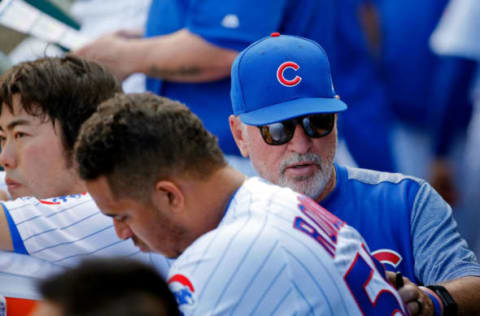
Chicago Cubs: Looking at what went wrong in 2017
As mentioned earlier, the difference between the ‘old’ Hector Rondon and the version we saw in 2017 came down to control.
From 2014 to 2016, Rondon put up a staggering 5.00 strikeout-to-walk ratio. But this year, the righty saw that drop to 3.45. His walks-per-nine climbed from 1.4 in 2016 to more than double at 3.1. In short, you couldn’t trust the former stopper to come through in tough spots. When he got behind hitters, opponents made him pay.
When Rondon found himself behind in the count, things did not work out in his favor. Opponents put up a staggering .310/.487/.552 slash-line in 2017 in such situations. So what was the difference between how he used his pitches when compared to past seasons?
His hard-hit percentage was actually better this year than in his 2016 campaign. That being said, it was nearly 10 points higher than in 2015 (up to 30.6 percent from 22.2 percent). He simply missed his spots more often than in the past.
He used his slider a bit more and his fastball a bit less. Velocity was a non-issue, but given his inability to locate his heater, Chicago never got what they needed from Rondon. He dug himself a hole far too often – and just couldn’t seem to pitch his way out of jams.
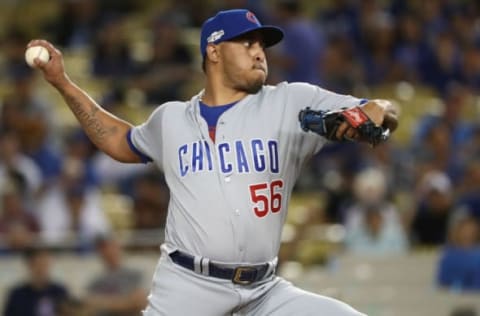
Chicago Cubs: There’s cause for optimism
As a staff, the Cubs struggled badly with control. It ultimately cost Chris Bosio his job at season’s end. So don’t think control issues were unique to Hector Rondon in 2017.
By a lot of measures, Rondon did what he’s done in the past. He mixed fastball and slider to opponents, he pitched well in the clutch – all what we’ve come to expect. In late and close situations, according to Baseball Reference, the Venezuelan limited opponents to a .197/.319/.328 line.
He didn’t have velocity issues. His fastball had life – it just came down to executing. Working with new pitching coach Jim Hickey will hopefully lend attention to Rondon’s issues in locating his pitches ahead of 2018.
I’ve been criticized for being overly optimistic. Earlier this weekend, I suggested Justin Wilson may be a prime bounce back candidate and I was flayed alive by more than a few Internet commenters. But, again. Similar to Wilson, Rondon’s 2017 performance in a Cubs uniform is a statistical outlier.
Next: Cubs could play it safe, shock nobody this offseason
Until there’s a year-to-year trend and statistical evidence that suggests otherwise, I’m going to be optimistic. Hector Rondon has been a top-shelf reliever for several years now and he may very well prove what he’s worth yet again in 2018.